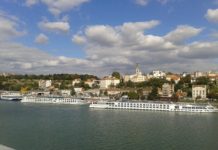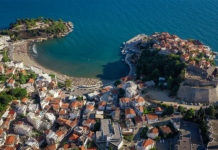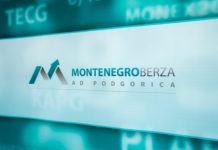Podgorica, (MINA-BUSINESS) – According to the World Bank (WB) projections, Montenegro’s economy will see a 2.8 percent growth next year, one percentage point lower than this year, as major investments in the transport and infrastructure sectors gradually slow down.
Senior Economist at the World Bank, Marc Schiffbauer, said that the outlook for Montenegro was still positive.
“The growth has been projected to slow down from this year’s 3.8 percent to 2.8 percent next year and 2.5 percent in 2020,” Schiffbauer said at a press conference, presenting the latest Western Balkans Regular Economic Report.
He explained that this was normal because the major investments in the transport and infrastructure, which had been the main drivers of growth in 2017 and 2018, started to slow down.
“These lower investments will slow down the GDP growth as well. The growth will still be at the solid 2.8 percent, meaning that the outlook for the strengthening of the economy is positive,” said Schiffbauer.
This is the 14th WB regional report covering Albania, Bosnia and Herzegovina, Kosovo, Macedonia, Montenegro and Serbia.
He said that the growth projected for Montenegro would be higher than expected, adding however that the fiscal and external imbalances still remained.
“This is primarily due to a strong first half of the year, with growth exceeding four percent mainly thanks to investments and a strong tourist season,” said Schiffbauer, adding that the growth was mainly driven by public and private investments.
According to him, the growth is strong while the private investments are increasing, with plenty of room for new foreign investments in Montenegro.
“What is important is not only the quantity but also the quality of investments. Foreign direct investments in Montenegro are concentrated in the tourism, energy and real estate sectors, and they account for 80 percent of the total FDIs,” said Schiffbauer.
He explained that foreign direct investments in these sectors had not necessarily established connections with national economy, failing not boost further growth and consumption.
“FDI is the ICT, finance and manufacturing sectors typically have strong connections with local companies and transfer of knowhow and technologies,” said Schiffbauer.
He added that foreign direct investments in the ICT, manufacturing and finance sectors were at a rather low level in Montenegro.
Talking about employment, Schiffbauer said that the economic growth has stimulated job creation in the private sector.
“The employment rate is still low, meaning that more than one half of the working-age population is still unemployed. The trend is positive, but the situation needs to improve,” said Schiffbauer.
He believes that current account deficit has not decreased yet.
“The current account deficit was at 16.4 percent of GDP in June. Montenegro has a high current account deficit, the highest one in the region, which is an issue that requires attention,” said Schiffbauer.
Talking about the public debt, Schiffbauer said that it was still high, adding that its level kept increasing.
“It is expected that the public and publicly-guaranteed debt will increase to 75 percent by the end of the year. Montenegro has the highest public and publicly-guaranteed debt in the region. Even though the economic growth is positive and has resulted in new jobs, the level of public debt is still high, which exposes the country to certain risks,” said Schiffbauer.
He said that the risks were considerable, as Montenegro was vulnerable to an increase in global interest rates.
“It is important to continue with fiscal consolidation. The revenues are growing, which is good, but it is important to continue to control spending in order to make sure that the high level of public debt declines over the next several years,” said Schiffbauer.
According to the latest report, this year’s economic growth will be at 3.5 percent in the Western Balkans.
Longer version of article is available on a link MINA ENGLISH SERVIS
























